Development

Universe Sandbox 2022 Retrospective
Mar 2nd
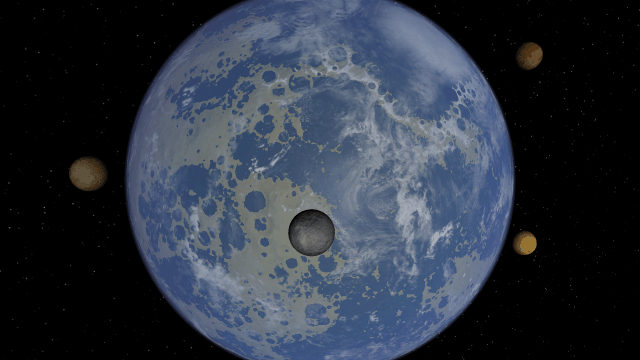
We’re excited about our plans for 2023, including adding more materials to planets as well as improvements for our physics simulation, but we’ll dive into our roadmap in an upcoming post. First, let’s reflect on some of our accomplishments from 2022.
1
New team member
Last year, Conrad joined the team as our User Interface Engineer. Since then, Conrad has been adding interface controls for object customization, fixing general usability issues, and helping to make our user interface easy to use on small screens in preparation for Universe Sandbox on mobile.
8
New guides and fly-by simulations added to Universe Sandbox in 2022
We added new guides on object customization and a simulation of NASA’s DART mission. This ambitious mission tested humanity’s ability to deflect asteroids away from Earth by intentionally crashing a satellite into an asteroid and accurately predicting the change in the asteroid’s orbital period.
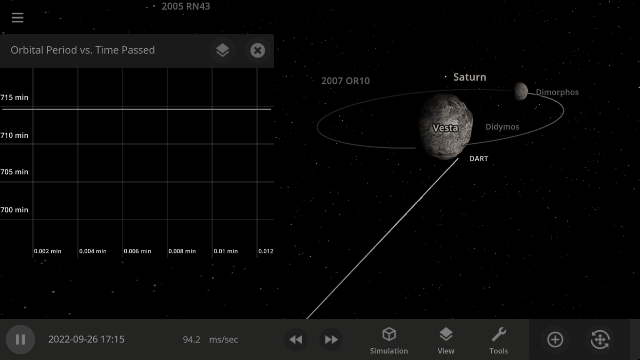
9
Significant updates to Universe Sandbox
- Consistent Collisions, James Webb, & Planetscaping Tweaks | Update 29.1
- JWST is now in Universe Sandbox, and there’s an eyedropper for the Planetscaping tool
- Hit Hard, Spin Fast | Update 30
- The new Force Spin tool allows you to spin apart planets with the newly implemented centrifugal force
- Collisions between spinning and equal-size objects are more realistic than ever before
- The habitable zone is now simulated using the selected planet’s properties, and the Hubble Space Telescope is now in Universe Sandbox
- Constellations | Update 31
- Explore constellations for 10 different cultures
- Object glows now correspond to how hot an object is
- A Warmer Welcome | Update 31.1
- Our welcome guides have been overhauled so you can discover the infinite power to create and destroy in Universe Sandbox
- Upgrading Our Engine | Update 31.2
- We updated Unity, the game engine we use to create Universe Sandbox, to allow us to utilize new features for future improvements
- Instantly see where water will flow on a planet with the new Settle Water button
- Planetary Defense DART | Update 31.3
- Many collision improvements and a simulation of NASA’s DART mission, which intentionally collided the DART spacecraft with the asteroid Dimorphos, changing its orbit & testing humanity’s ability to protect Earth from future asteroids
- Space is Big | Update 31.4
- Units of measurement have been updated to help you better understand the vastness of space
- Build-A-Planet | Update 32
- Customize and manipulate the appearance and elevation of planets using any of the in-game visual and elevation maps
- Skies of Blue, Red Collisions Too | Update 32.1
- Collision shockwaves are now more realistic, and we added basic Rayleigh scattering to atmospheres
- The simulation speed can automatically adjust itself based on various conditions, like nearby objects and collisions, by turning on Automatic Simulation Speed
View our “What’s New” for a chronological list of changes.
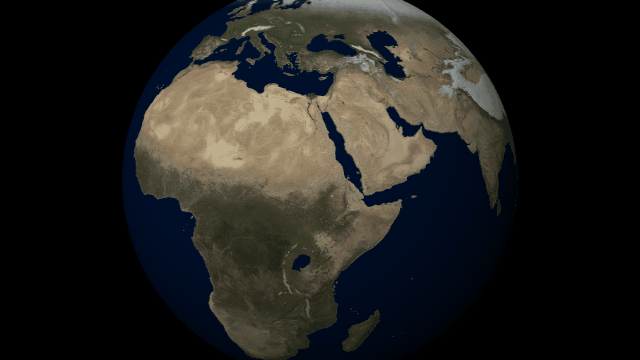
31
Preview versions uploaded in 2022
Your playtesting of our preview versions (previously called community test builds) gives us valuable feedback for improving features in active development. A huge thanks to our wonderful community for all their help.
571
Highest number of concurrent users in Universe Sandbox in 2022
The highest number of concurrent users we’ve ever had was almost in 2022: 648 on December 24, 2021. We’ve already beaten the highest number this year, but you’ll need to wait for the next retrospective to see it.
1,801
Positive Steam reviews in 2022
We’re truly humbled that we are still rated “Overwhelmingly Positive,” both recent and all-time on Steam (over 96% of reviews are positive). Your support and feedback are truly appreciated and help make Universe Sandbox even better.
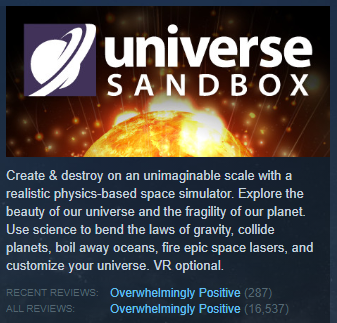
1,862
Code commits, or changes, made to the Universe Sandbox project in 2022
The most code commits occurred during the week of May 8, when 65 commits were made. While a single commit can be as small as fixing a typo, some of them have been whole new features.

7,735
Files uploaded on our team messaging app
These are files we share with each other via Slack and include screenshots and videos of features in progress, log files for resolving issues, and astronomy jokes.
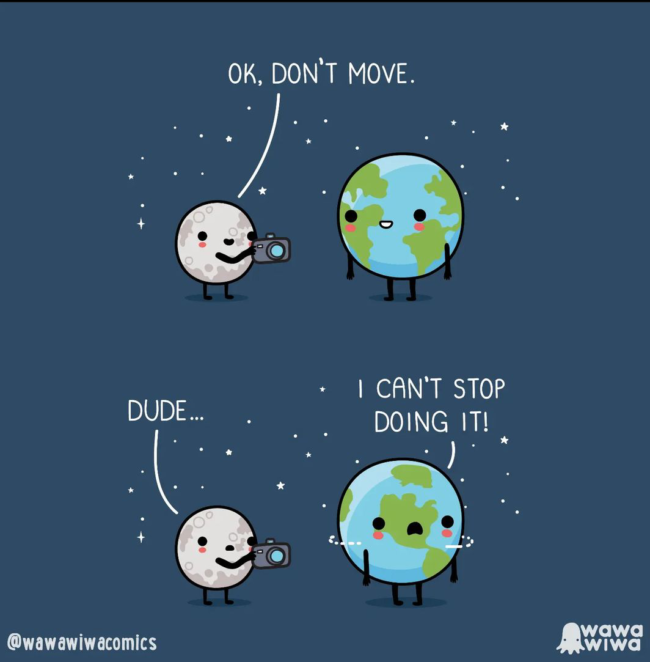
8,151
Discord users on our server at the end of 2022
It’s great to see your creations and constructive discussion on our server, which has grown by over 22.5% in the last year. Join us on Discord.
9,253
Simulations shared in the Universe Sandbox Steam Workshop in 2022
That’s more than 25 simulations shared every single day! You all continue to use Universe Sandbox in ways we could never have imagined, and we can’t wait to see what you make next.
74,257
Messages sent on our team messaging app
Giant Army has been entirely remote since its founding in 2011, and with 13 team members across 3 continents and 6 time zones, messaging on Slack is how we get most of our work done.
537,209
Times the Welcome to Universe Sandbox guide was played
Whether you’re a new player or just wanted to check out the reimagined welcome guides we released last year, we hope you enjoyed learning about the beauty of our universe. You’re using that knowledge responsibly, right?
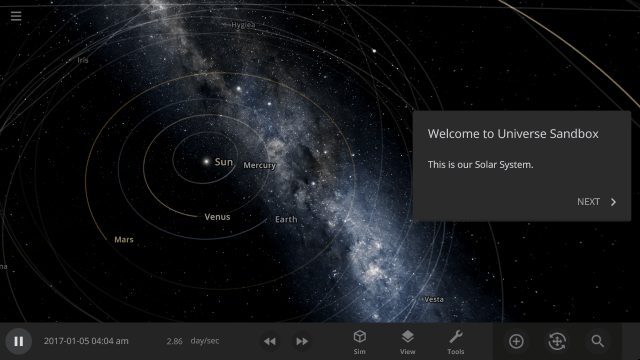
911,241
Times the Planetscaping tool was used in 2022
Letting you shape and customize planets is integral to the spirit of Universe Sandbox, and we’re glad you’re experimenting with the power that comes with it.
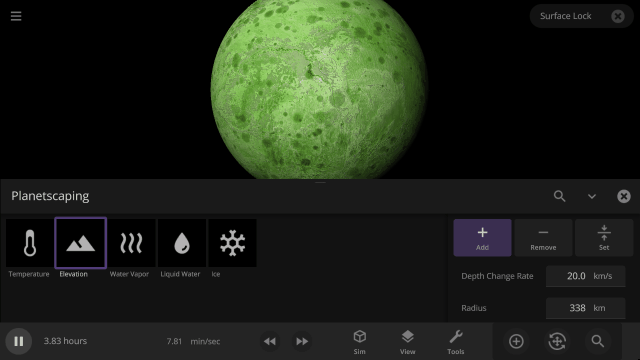
1,251,635
Times supernovas went off in Universe Sandbox in 2022
Astronomers estimate there will be 1 supernova in the Milky Way every 100 years. They also think there are about 100 billion galaxies in the universe. Assuming all galaxies have a similar number of supernovas to ours, there are about a billion supernovas in the universe each year. We got about 0.1%* of the way there in 2022. Let’s see if we can get closer in 2023!
*Thanks to Steam user Nantes for pointing out that the original value of 1% was wrong, and this should be 0.1%
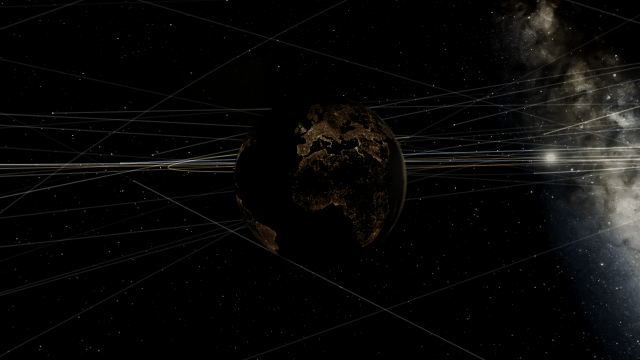
2,007,301
Times the top played simulations of 2022 were opened*
The top 10 sims of 2022 were:
| Rank | Simulation Name | Times Opened |
| 10 | Saturn with Rings | 129,522 |
| 9 | Voyager 1 & Jupiter in 1979 | 130,275 |
| 8 | Solar System – Just Planets | 136,798 |
| 7 | Milky Way & Andromeda Galaxy Collision | 145,261 |
| 6 | Earth & 100 Colliding Moons | 171,990 |
| 5 | Earth & Moon | 173,774 |
| 4 | Tidally Locked Earth | 177,224 |
| 3 | Milky Way | 189,958 |
| 2 | Galaxy Collision Hi-res | 227,148 |
| 1 | Solar System – Live View – Planets, Moons, Spacecraft | 525,351 |
*not including creating a new simulation or the Solar System simulation that opens when you start Universe Sandbox
Check them out to see what all the fuss is about!
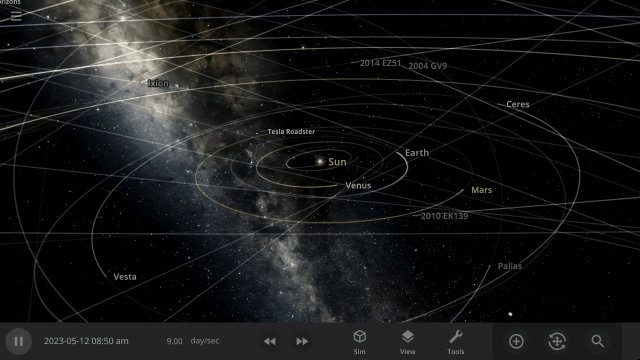
3,987,005
Times the Force tool was used in 2022
Whether you were giving planets a gentle nudge, slightly adjusting their rotation, or spinning them apart, we know you were forceful in your efforts.
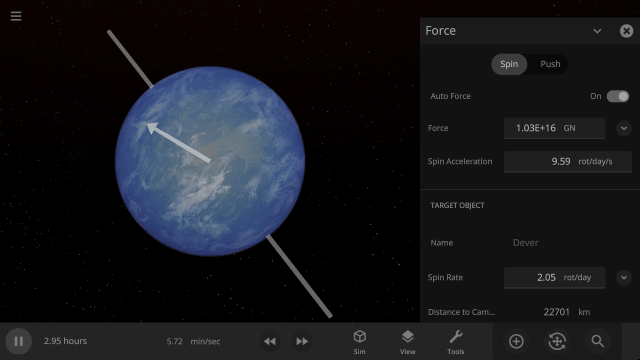
6,265,426
New simulations were created in Universe Sandbox in 2022
That’s about the same number as last year, with a new simulation created every 5 seconds.
35,802,793
Times a simulation was played or paused in 2022
By far the most popular thing to do in Universe Sandbox in 2022 was to play or pause a simulation. That’s about once every second.
What’s Next?
More materials for building planets and their atmospheres, physics simulation performance improvements, non-star objects emitting light based on their temperature, and more are in store for 2023. Be on the lookout for our 2023 Roadmap, which will have more details about our plans for this year.
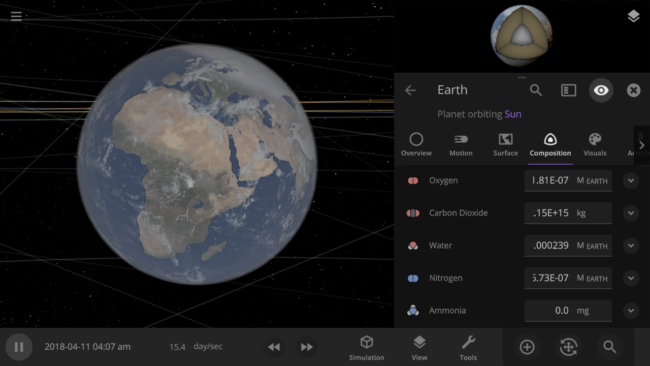
And Most Importantly…
Thank you. Your continued encouragement and support let us keep simulating the universe more realistically year after year. We are so grateful for your suggestions, feedback, and kind words. The simulations you create continue to impress us, and we want to continue improving Universe Sandbox to expand your creative (and destructive) capabilities. There’s so much to do, and we can’t wait to do it!
The Universe Sandbox Team
Dan, Chris, Georg, Jonathan, Rappo, Mat, Jacob, Erika, Brendan, Anders, Brent, Pavel, and Conrad

Skies of Blue, Red Collisions Too | Update 32.1
Dec 14th
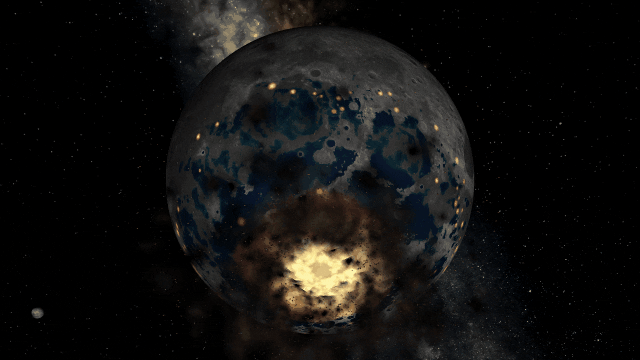
If Update 32.1 does not download automatically, follow these update instructions. If you don’t own Universe Sandbox, you can buy it via our website.
Collision shockwaves and atmosphere colors are more realistic, camera motion is smoother, and you can try the new Automatic Simulation Speed, which adjusts the simulation speed based on what’s happening in the simulation. Never miss a collision again!
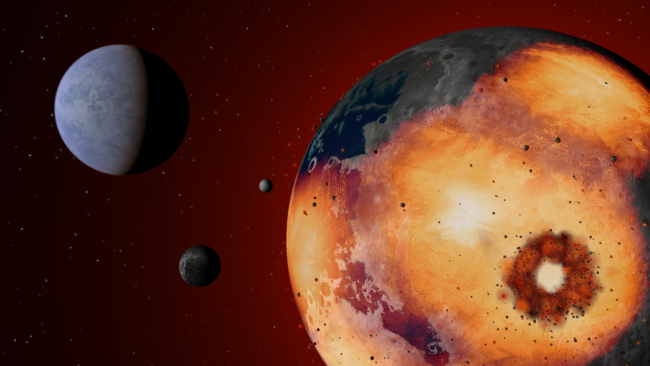
Improved Shockwaves
Energy from collisions spreads more realistically over the surface of an object, resulting in larger shockwaves. Heating from collisions is also less concentrated and spreads over a larger area. Previously, shockwave expansion ended abruptly in a smaller area, often resulting in blue-hot impact sites.
The dwarf planet Ceres colliding with Earth
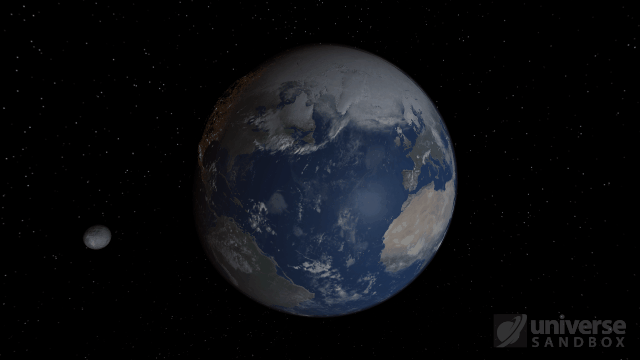
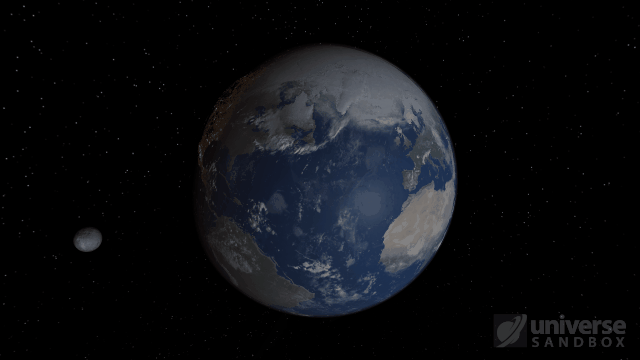
The Moon colliding with the Earth
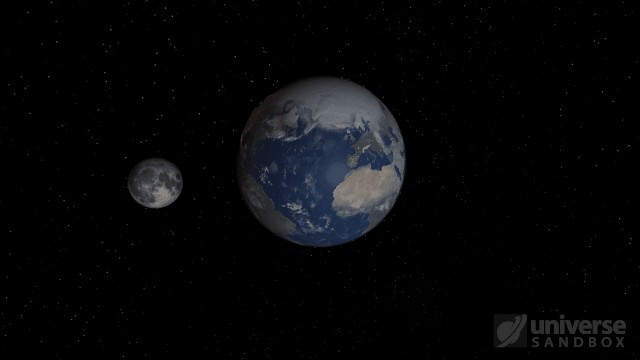
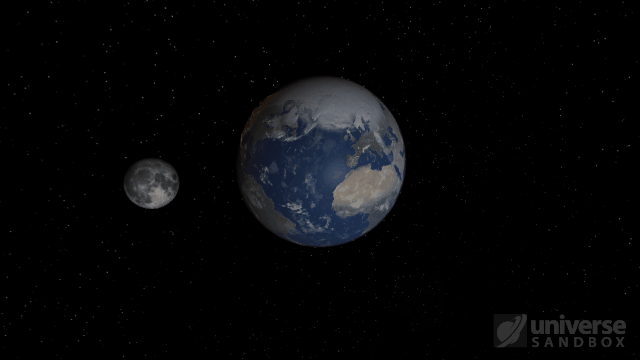
Automatic Simulation Speed
Allow the simulation speed to adjust itself automatically based on various conditions, like nearby objects and collisions, by turning on the new Automatic Simulation Speed feature. Automatically speeding up and slowing down the simulation speed provides an improved viewing experience for collisions, orbits, explosions, and more.
This feature is still in active development and is currently off by default. Turn it on under
Settings > General > Experience > Auto Simulation Speed
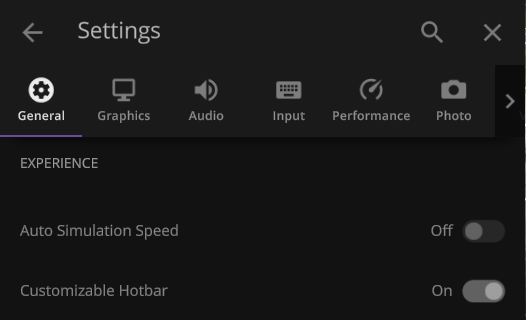
The simulation speed will slow down to show collisions that you might otherwise miss
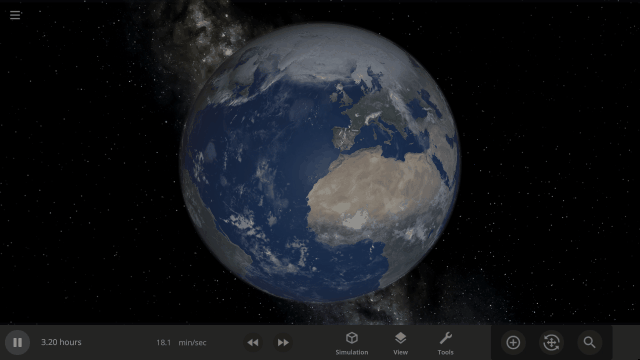
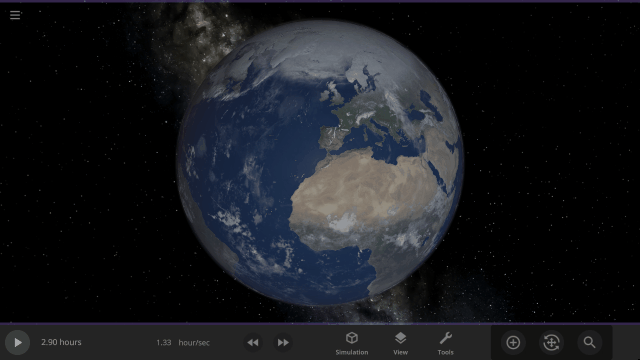
Create a more cinematic experience while watching simulations like Earth & 100 colliding moons
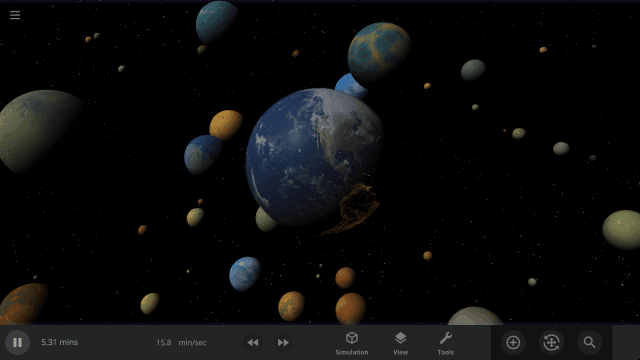
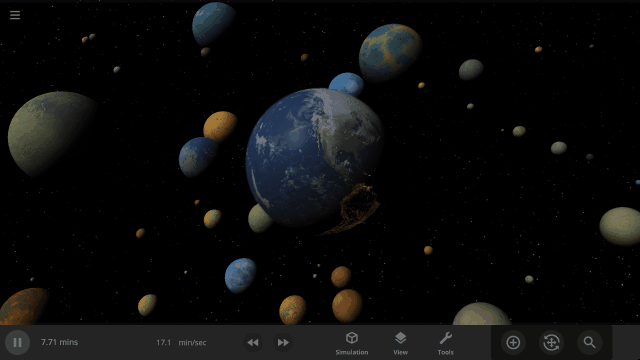
Rayleigh Scattering
Object atmospheres now visually simulate Rayleigh scattering, which describes how light scatters in the atmosphere. Rayleigh scattering is what makes Earth’s daytime sky appear blue and the setting Sun appear red. Adjust the strength of the scattering under
Visuals > Atmosphere > Rayleigh Scattering Strength
Earth with realistic Rayleigh scattering
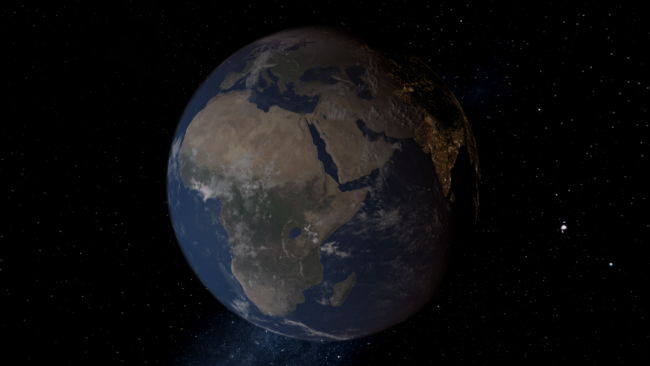
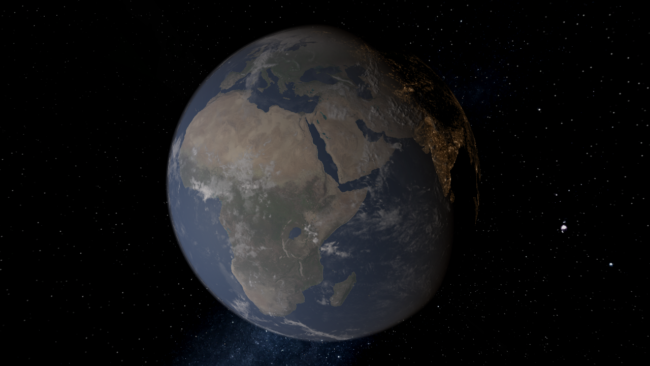
Custom object with Rayleigh scattering at 85% strength
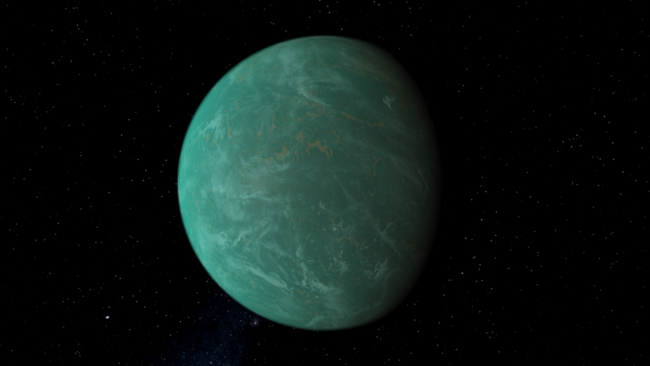
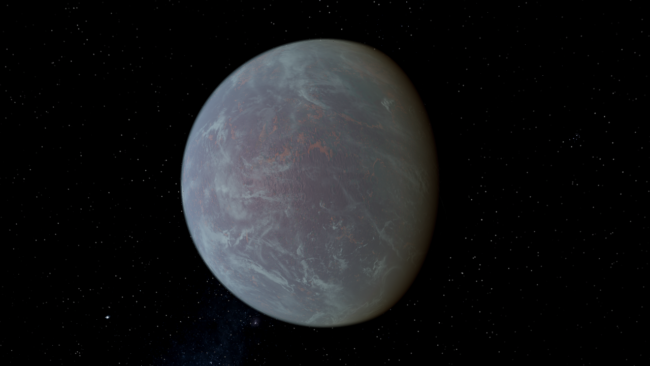
More Highlights
Your view now smoothly rotates, or pans, to focus on an object instead of sliding the view left or right, like a camera on rails
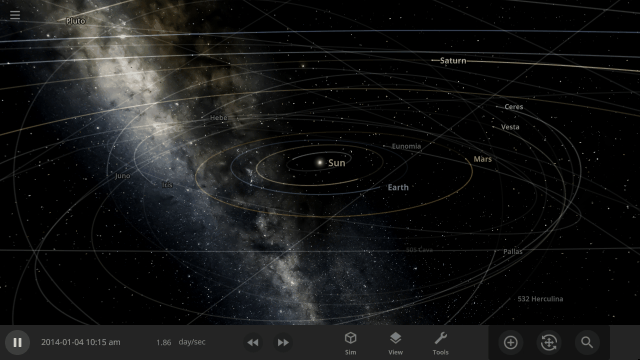
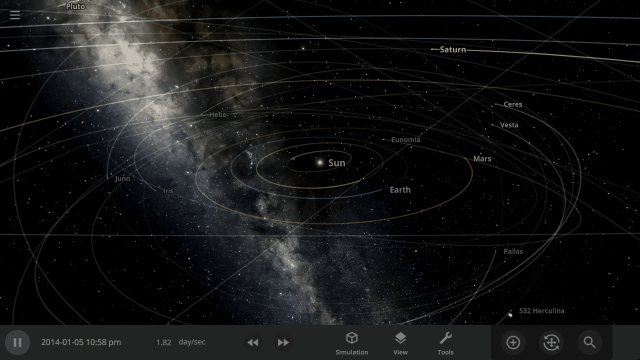
Atmospheres are now visible from the surface of planets. Land on a planet by pressing “c” on your keyboard to check it out.
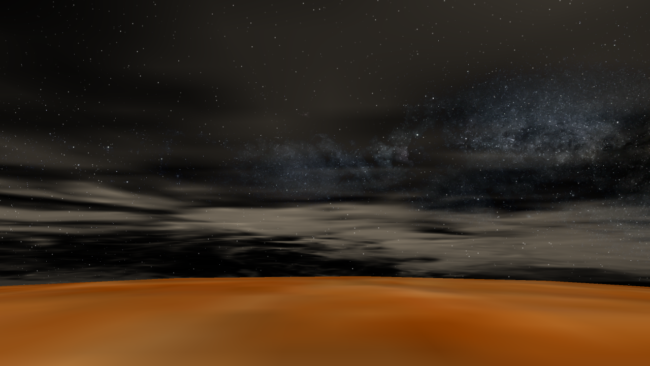
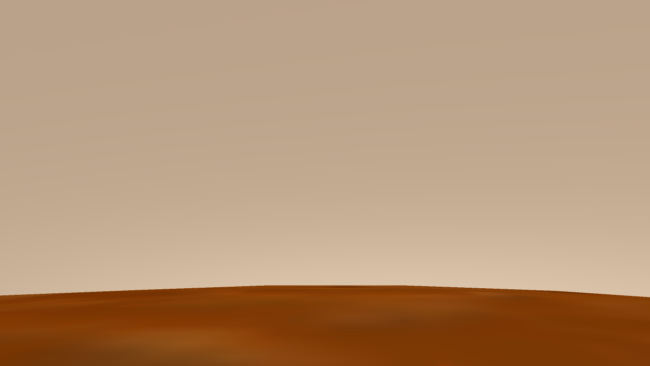
Check out the full list of What’s New in Update 32.1
Please report any issues on our Steam forum, on Discord, or in-game via Home > Send Feedback.

Build-A-Planet | Update 32
Nov 17th

If Update 32 does not download automatically, follow these update instructions. If you don’t own Universe Sandbox, you can buy it via our website.
Customize the look and topography of planets and moons with a library of realistic color and height maps. Turn Earth into Mars or mix-and-match maps to create your own worlds.
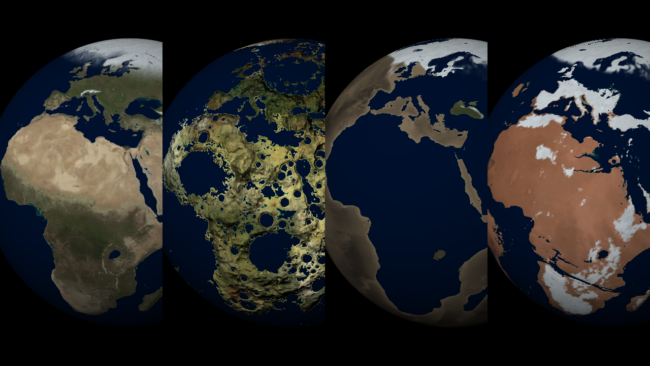
Elevation Maps
Blend, shift, and flip any two of the elevation maps in Universe Sandbox to create your own custom surface that governs water flow, temperature simulation, and more. Learn more
Guides > Tutorials > Creating Planets from Scratch & Transforming Planets
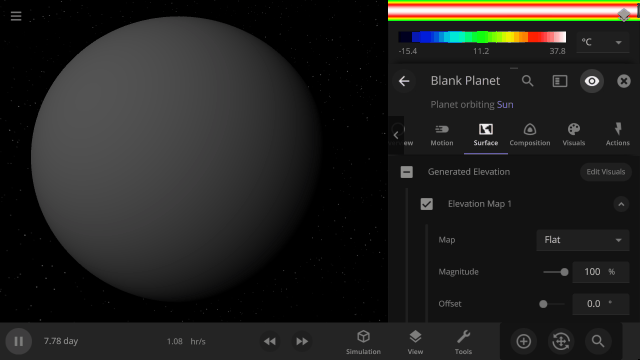
Color Maps
Change the surface map of any planet to match other planet images included in Universe Sandbox.
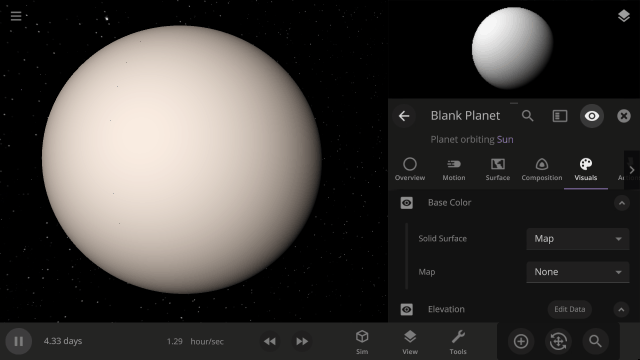
Apparent Elevation Intensity
Change the apparent difference between high and low elevation, also called the normal map, under
Visuals > Elevation > Exaggerated Terrain
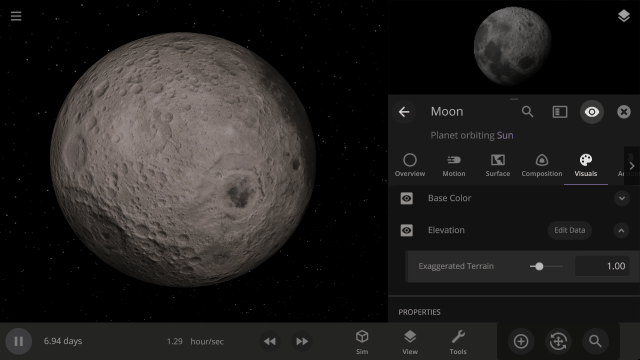
More Highlights
Invert a planet’s elevation with the push of a button under
Surface > Elevation > Elevation Map > Flip
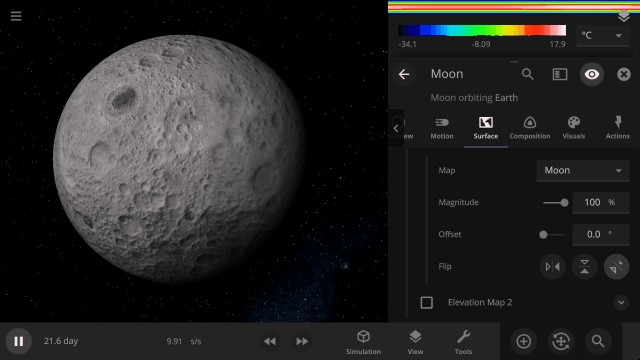
View a planet’s simulated surface without high-resolution corrections under
Properties > Visuals > Enhance Surface Detail
Turning off the enhanced view shows the map resolution we use for simulating object surfaces, including water flow and snow.
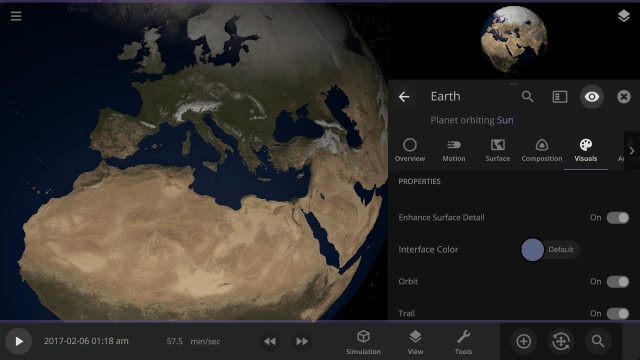
Turn off the visual glow from high temperatures, also called blackbody radiation, under
Properties > Visuals > Heat Glow
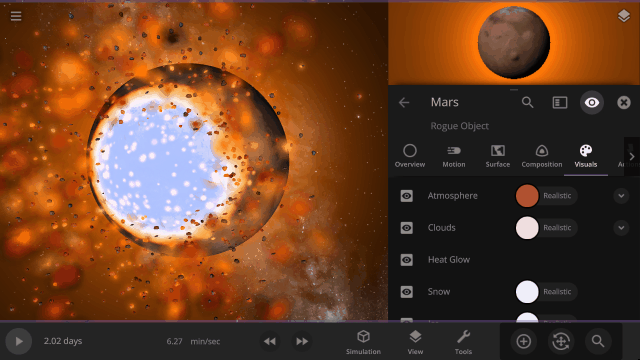
This update includes 9+ additions and 3+ fixes and improvements.
Check out the full list of What’s New in Update 32
Please report any issues on our Steam forum, on Discord, or in-game via Home > Send Feedback.

Space is Big | Update 31.4
Oct 27th
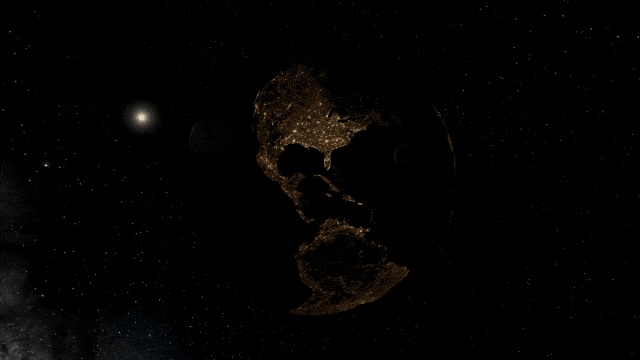
If Update 31.4 does not download automatically, follow these update instructions, or buy Universe Sandbox via our website.
“Space is big. You just won’t believe how vastly, hugely, mind-bogglingly big it is. I mean, you may think it’s a long way down the road to the chemist’s, but that’s just peanuts to space.”
- Douglas Adams, The Hitchhiker’s Guide to the Galaxy
And now we’ve made it a bit easier to comprehend the scale of space.
Scaling Space
The unit of measurement selection menu now explains what each unit means to help you better understand the vastness of space. Unit names based on the properties of other objects (like Earth mass) have also been updated for clarity.
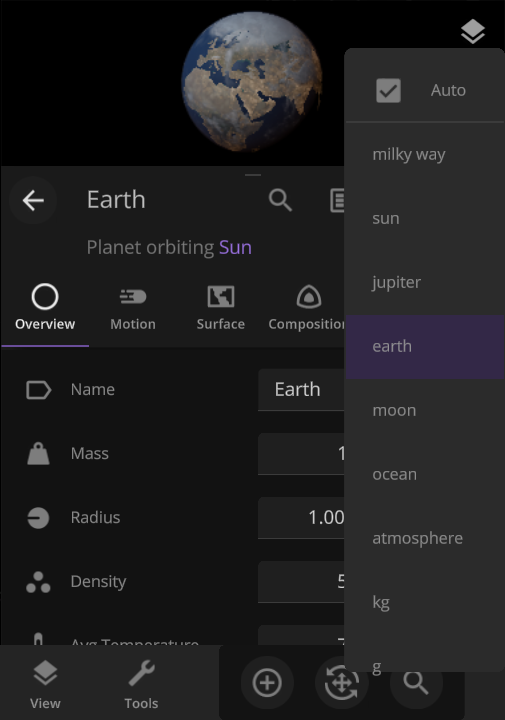
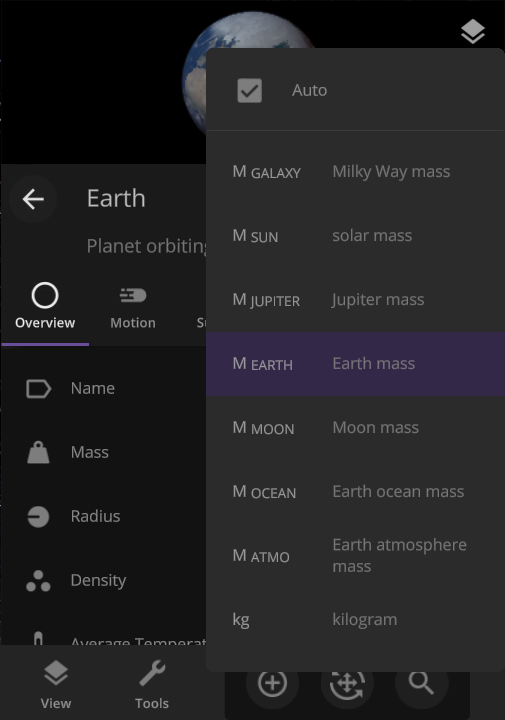
Juno Flyby of Europa
On September 29, 2022, the Juno spacecraft performed a flyby of Jupiter’s moon Europa, coming within 352 kilometers and taking the highest-ever resolution close-up image of the moon’s surface. Watch this close flyby in our new simulation
Juno Flyby of Europa in 2022
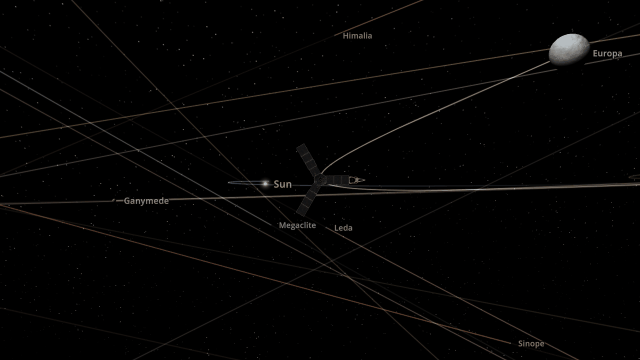
More Highlights
You can now view and monitor the data views for all objects in a simulation at once, also called the Atlas, by going to Open View Panel Settings > 2D Settings > Show All Maps Atlas. The interface for this type of view is a work in progress.
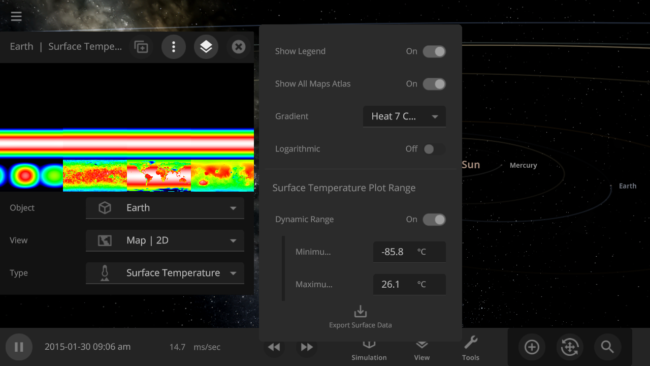
Object holograms have been updated to look the same, be more visible across different backgrounds, and clearly show their positions in front of or behind other objects
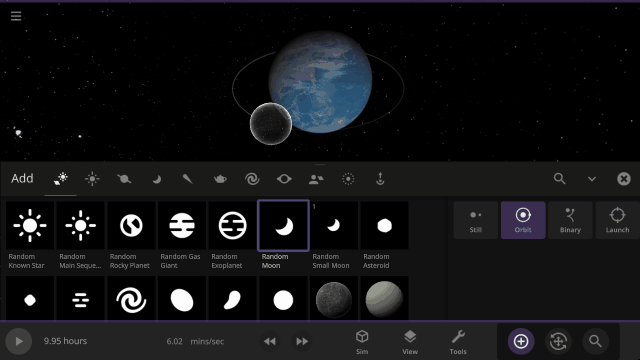
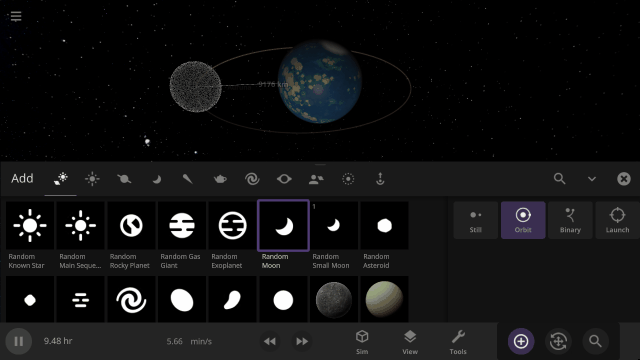
This update includes 4+ additions and 15+ fixes and improvements.
Check out the full list of What’s New in Update 31.4
Please report any issues on our Steam forum, on Discord, or in-game via Home > Send Feedback.

Planetary Defense DART | Update 31.3
Sep 22nd
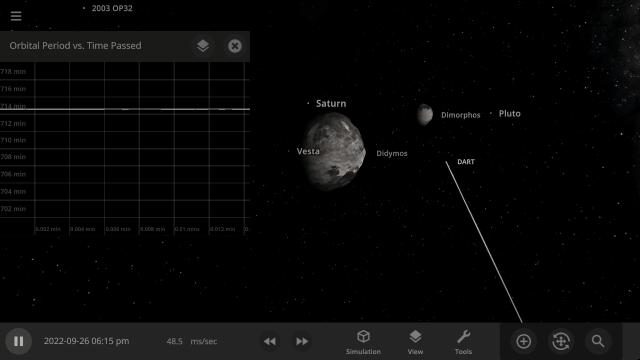
If Update 31.3 does not download automatically, follow these update instructions, or buy Universe Sandbox via our website.
DART Mission
NASA’s DART mission will intentionally collide the DART spacecraft with the asteroid Dimorphos, attempting to change its orbit & testing humanity’s ability to protect Earth from future asteroids. Check out our simulation of this mission:
Open > DART: Humanity’s First Planetary Defense Experiment
More Highlights
Fragment temperature and glow from collisions are now realistically based on the collision energy. Low energy collisions, like the one shown here, don’t generate enough energy to make the particles glow.
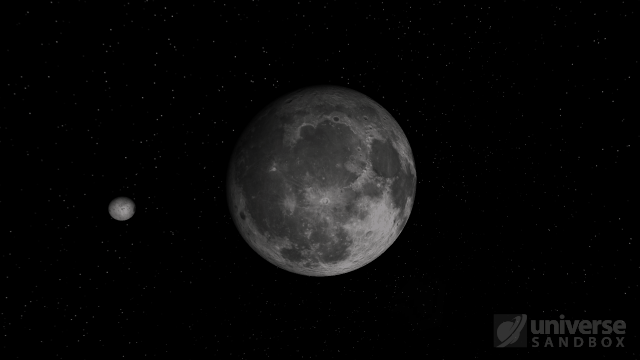
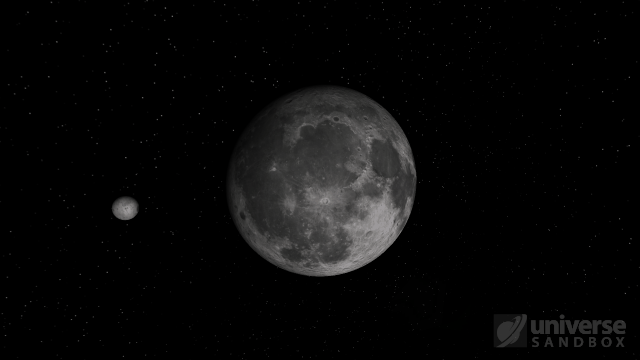
Camera transitions after the target collides are smoother
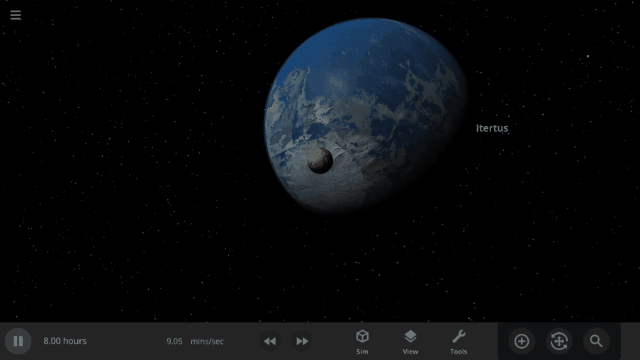
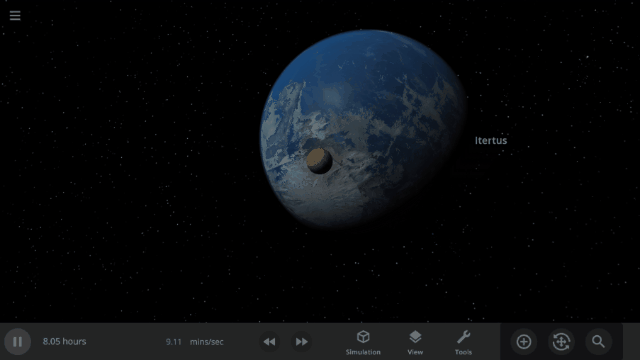
Explosions now create rock fragments and dust clouds
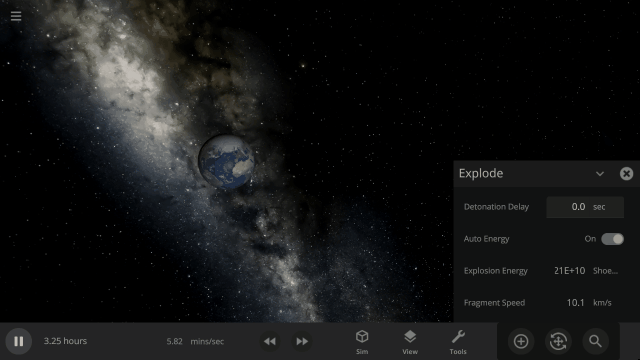
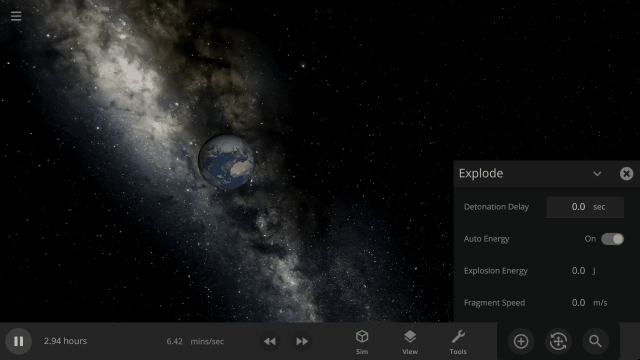
Under-the-hood improvements to make referencing known objects more reliable
This update includes 1+ additions and 20+ fixes and improvements.
Check out the full list of What’s New in Update 31.3
Please report any issues on our Steam forum, on Discord, or in-game via Home > Send Feedback.

Seven-Year Steam Launch Anniversary
Aug 24th
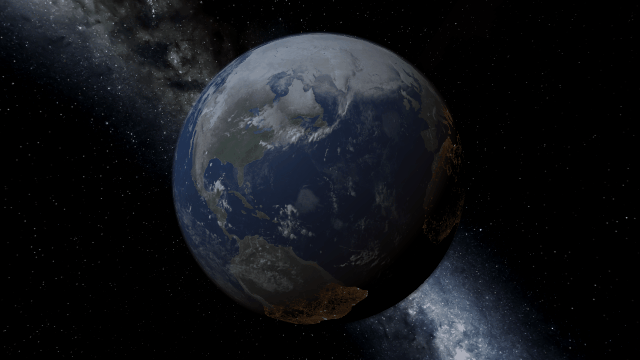
Today, August 24, 2022, marks the seventh anniversary of Universe Sandbox’s Early Access launch on Steam!
To celebrate, Universe Sandbox is on sale for another 120 hours (that’s until August 29, 2022). Pick up a copy for yourself or a friend today.
Over the last seven years, we’ve added tons of new features to make Universe Sandbox better than ever, and we’re still going strong. Our current development plans include
- Adding more materials to simulate planetary features lakes of liquid methane on Saturn’s moon Titan
- New rigid body physics for more realistic interactions between objects like bowling pins and satellites
- More realistic planetary collisions
Learn about what we’re working on in our 2022 Roadmap.
All of this would not be possible without the support of our community. You all use Universe Sandbox in ways we could never have imagined, and we are so grateful for all of you. Here’s to another amazing seven years.
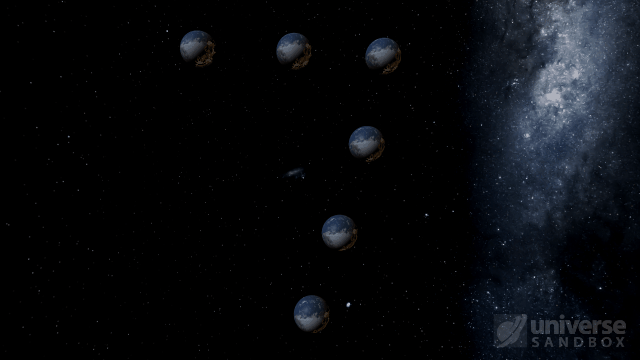

Upgrading Our Engine | Update 31.2
Aug 18th
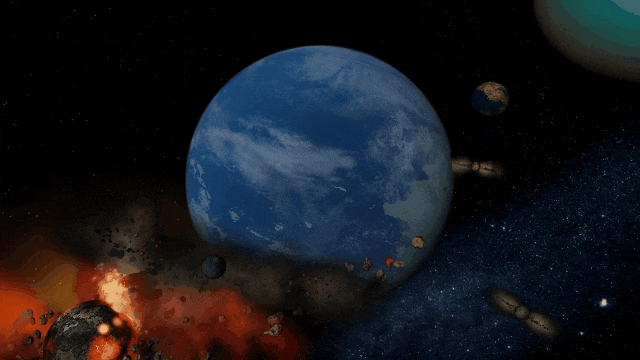
If Update 31.2 does not download automatically, follow these update instructions, or buy Universe Sandbox via our website.
Update 31.2
Unity Engine Upgrade
We’ve updated Unity, the game engine we use to create Universe Sandbox. While you won’t see immediate changes, this will allow us to utilize new features for future improvements to our physics simulation.
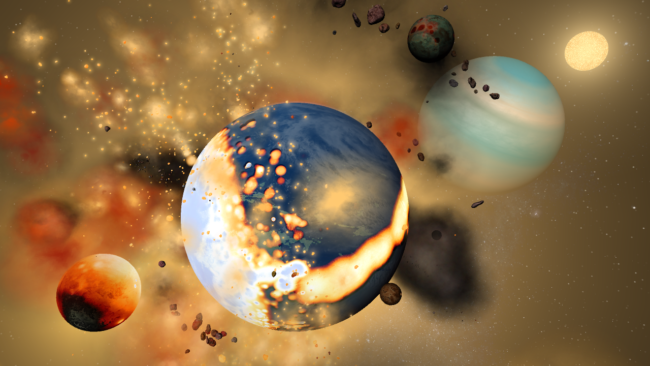
Instant Water Flow
Use the Settle Water button to immediately stabilize the water level of a planet.
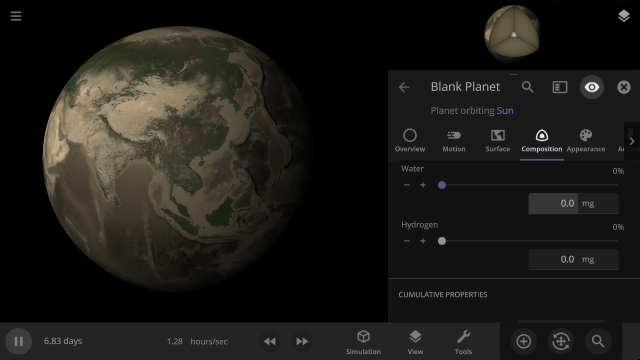
More Highlights
Control the lowest temperature of space with the Background Temperature. By default, this is 2.73 Kelvin to approximate the Cosmic Microwave Background. Adjust it under
Simulation > Advanced Simulation Settings > Temperature > Background Temperature
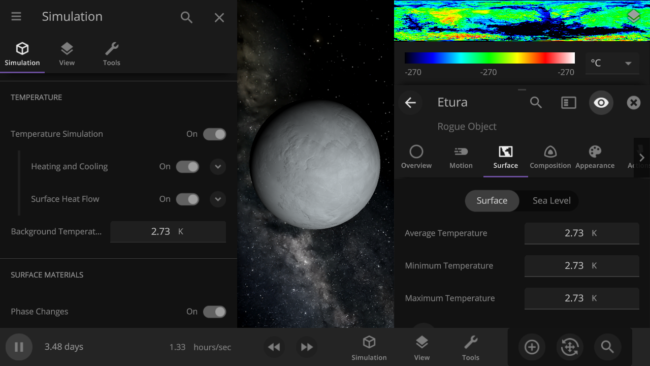
Random object icons in the Add tool have been updated
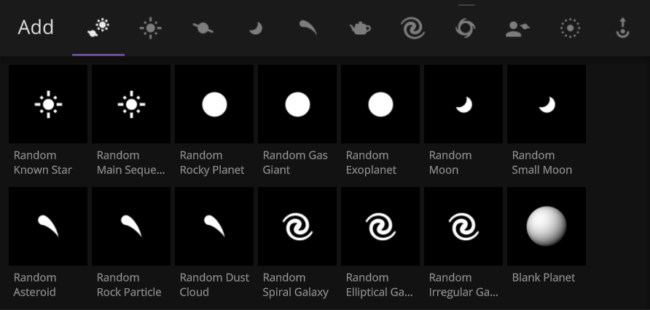

Learn about habitable zones and how Universe Sandbox models them in our guide
Guides > Science > Habitable Zones
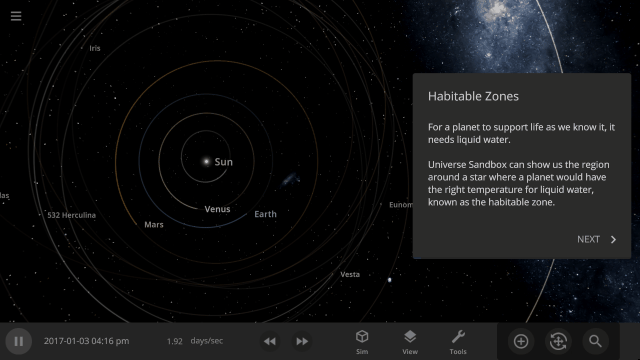
Stellar collisions now partially merge and transfer mass before going supernova
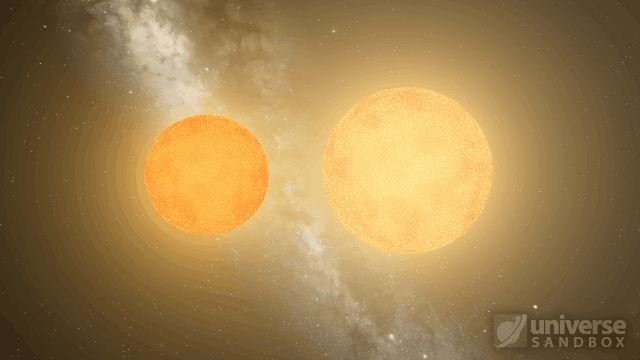
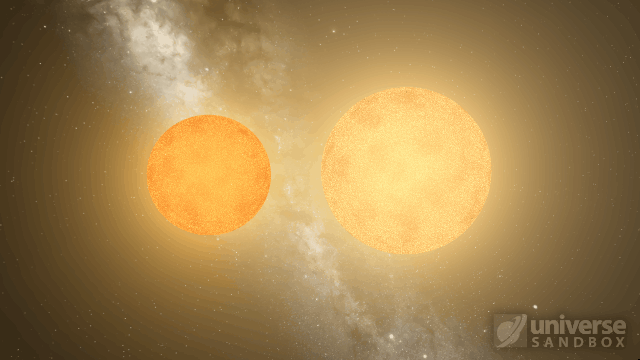
Collision shockwaves are now realistically circular
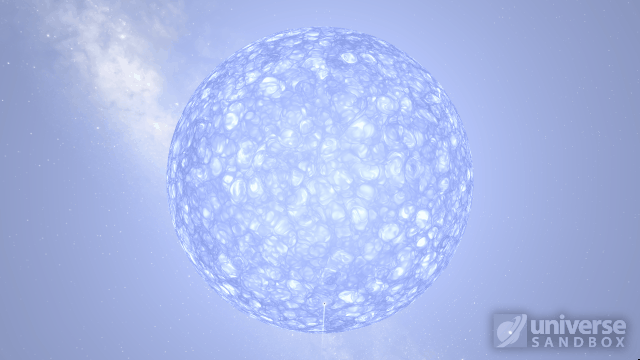
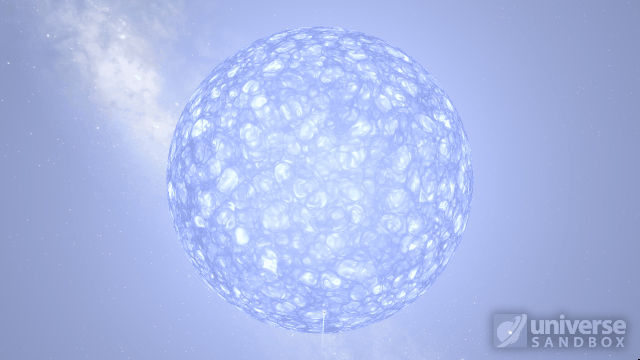
Particles now collide more consistently, and gas cloud momentum is now transferred to and from impacting objects


This update includes 3+ additions and 27+ fixes and improvements.
Check out the full list of What’s New in Update 31.2
Please report any issues on our Steam forum, on Discord, or in-game via Home > Send Feedback.

Moving to a 4-Day Workweek
Jul 14th
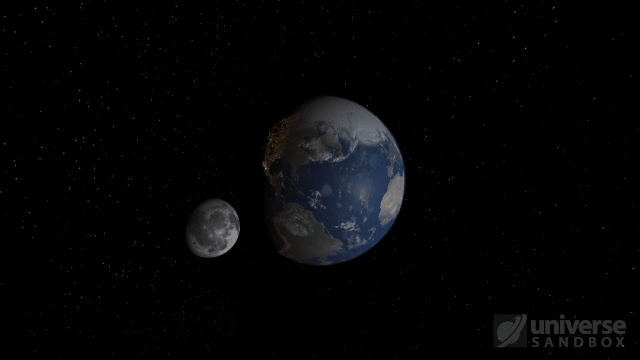
In October 2021, Giant Army, the creators of Universe Sandbox, a physics-based space simulator, officially adopted a 4-day, 8 hours a day workweek at full salary. This change has positively impacted our team, so we wanted to share how we made this decision to encourage other game studios and companies to experiment with a 4-day workweek.
Making the Decision
We started discussing a 4-day workweek after Microsoft Japan trialed it and found that it increased their productivity. Those discussions continued as we saw other companies and organizations experiment with it. In May 2021, as part of the team’s effort to reduce burnout, we decided to take Fridays off for a month.
Most of our team found that the 4-day workweek left them refreshed and just as productive, so we extended it for another month, and then another. In July 2021, we extended it through September but added one condition: you can take Friday off if you share a short daily update and screenshot summarizing what you did, Monday through Thursday.
For a fully remote team spread across multiple time zones, a quick, daily team meeting is not practical. This makes the importance of communication about progress or problems even more valuable.
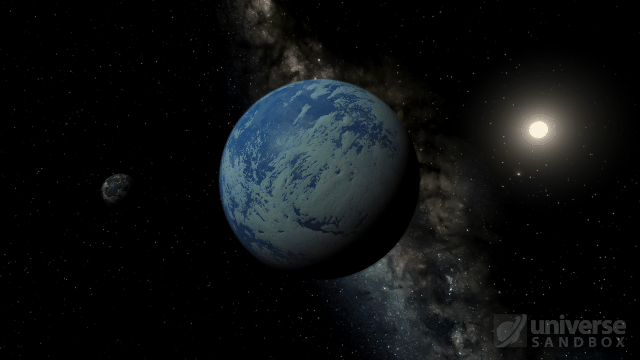
Even after an extensive trial period, there was concern that a 4-day workweek would lead to reduced productivity. So why did we do it?
Support from the Team
The team supported it. Direct quotes from our team include:
“Working a 4-day workweek for me has been a positive experience overall. I feel more organized and less stressed with both personal and work time.”
“[The 4-day workweek has led to] Fewer typos, far fewer odd little mistakes… etc. The sort of mistakes that go away when you’re even 10% sharper than before, or you have less brain fade.”
Steady Progress
While it’s difficult to quantify productivity, one would imagine that dropping a day a week would result in a drop in productivity. However, we continued to innovate and iterate on Universe Sandbox, adding new features and providing regular updates. Given the steady progress and increased happiness, switching to a 4-day workweek seemed like the right decision.
Reflections on the Change
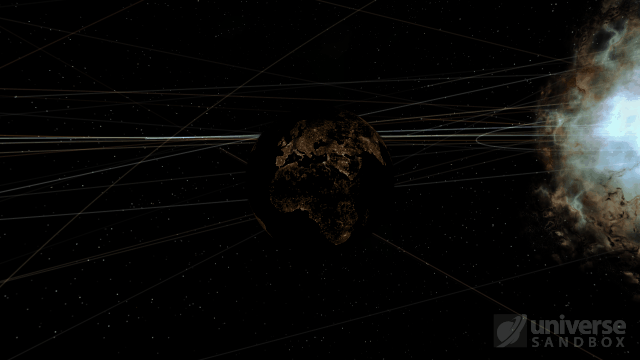
We think adopting a 4-day workweek has been a net positive for Giant Army. The shorter week has:
- Pushed us to optimize our time, leading to shorter and more efficient meetings
- Improved our work environment
- Helped us to attract candidates for our current and future open positions
There are some drawbacks to the shorter week:
- We have a rule not to release an update right before the weekend to avoid needing to be on-call during the weekend. Previously we did not release on Fridays. Now we don’t release on Thursdays (mostly).
- More emails and messages come in over a 3 day weekend
- Fewer days to schedule meetings (or is this a benefit?)
The number of code commits or changes (which are not generally a good measure of productivity) made to Universe Sandbox and the number of updates we released in 2021 is similar to the previous 2 years. While our official transition wasn’t until late 2021, and these measures don’t quantify how much work went into each commit or update, they support the idea that everybody has been just as productive.
Overall, we’re happier, and progress on Universe Sandbox is steady. If you have any questions about our 4-day workweek, please contact us.
Universe Sandbox is an interactive physics-based space simulator that merges gravity, collisions, and climate to reveal the awesomeness of our universe in a whole new way. Learn more on our website.
Addendum
Here are a few more details based on the questions we’ve received about our 4-day workweek:
Q: Did we take a pay cut because we are now working 4 8-hour days instead of 5?
A: No. Everybody on our team is salaried, and nobody took a pay cut as part of this transition.
Q: Did we consider having some team members work Monday-Thursday, and some work Tuesday-Friday so there would always be somebody reachable 5 days a week?
A: We actually did the opposite and tried to make sure everybody had as much overlap as possible to maximize collaboration. That means that our team member in Australia has Mondays off instead of Fridays because they’re a day ahead of our primary work time zone (PST).
Last Updated: July 21, 2022

A Warmer Welcome | Update 31.1
Jun 23rd
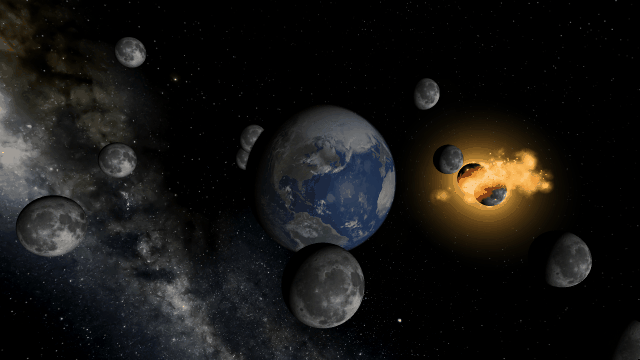
If Update 31.1 does not download automatically, follow these update instructions, or buy Universe Sandbox via our website.
Update 31.1
Welcome to Universe Sandbox
Discover your infinite power to create and destroy! Our all-new welcome guide now better highlights the awesome potential of Universe Sandbox. Check them out
Home > Guides > Welcome to Universe Sandbox
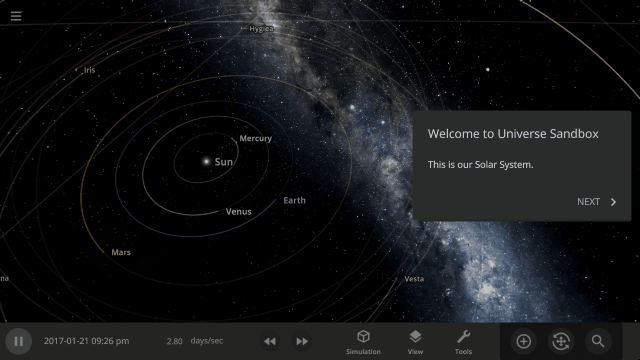
More Highlights
- Blank planets now have the densities of rocky planets instead of gas giants
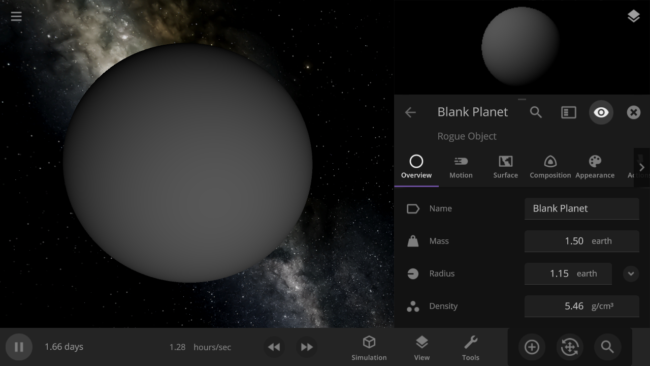
- The habitable zone no longer intersects planets, giving you a clearer view of the surface
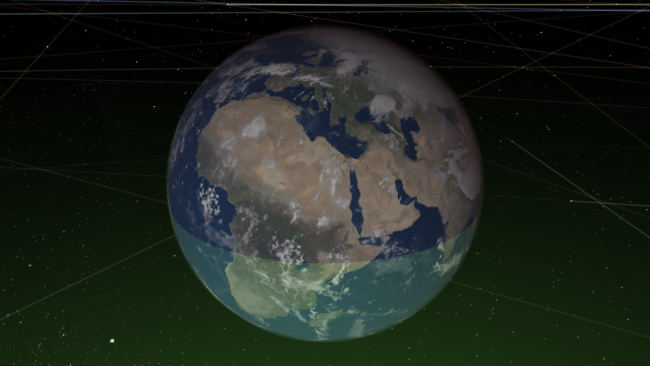
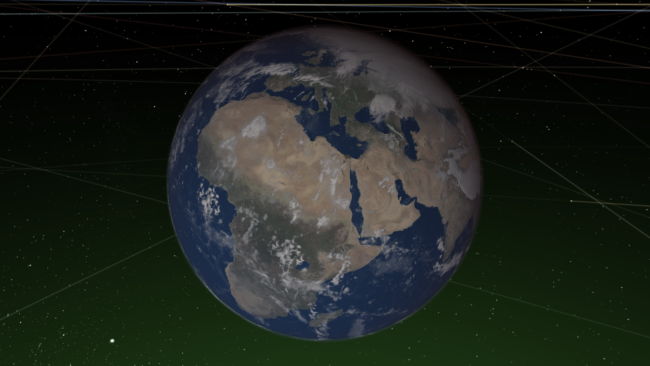
This update includes 1+ additions and 18+ fixes and improvements.
Check out the full list of What’s New in Update 31.1
Please report any issues on our Steam forum, on Discord, or in-game via Home > Send Feedback.

Constellations | Update 31
Jun 9th
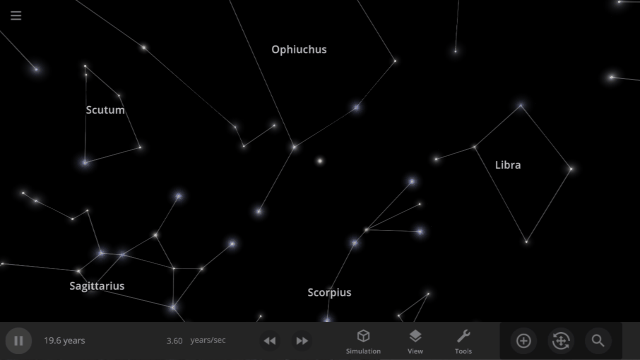
If Update 31 does not download automatically, follow these update instructions, or buy Universe Sandbox via our website.
Update 31
Explore constellations from different cultures and watch as they change over thousands of years as stars move across the sky. Stars also look more realistic and planet and star glows depend on the same physical properties.
Constellations
We’ve added constellations! There are currently constellation sets for 10 cultures. Find them under: Home > Open > Constellations
Learn more about constellations in our new guides: Home > Guides > Constellations
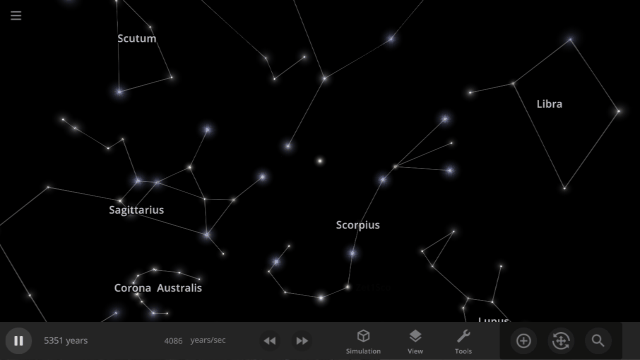
Realistic Stellar Edges
Stars now show limb darkening, an observed phenomenon where the edges appear dimmer than the center.
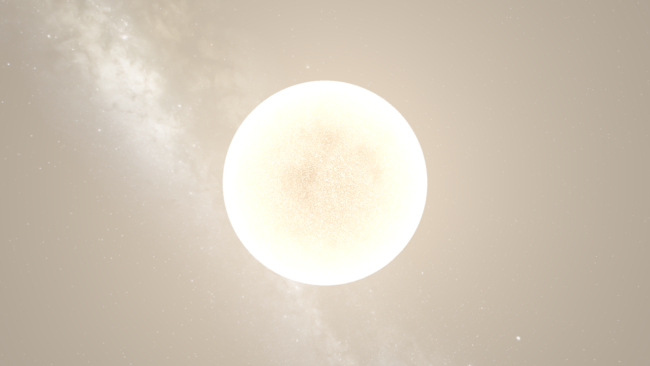
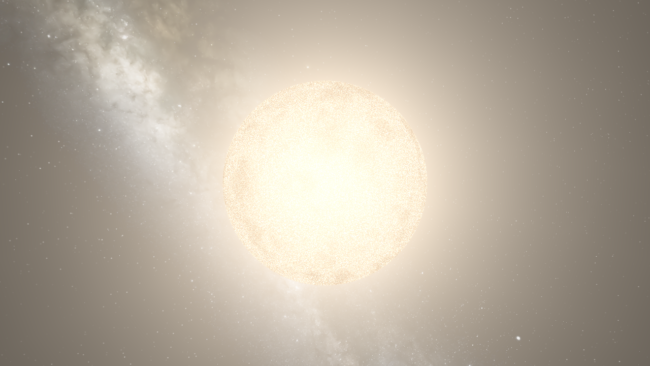
Dynamic Object Glows
The size of an object’s glow now corresponds to how bright the object is, in addition to its temperature and how far away it is, with brighter objects getting larger glows.
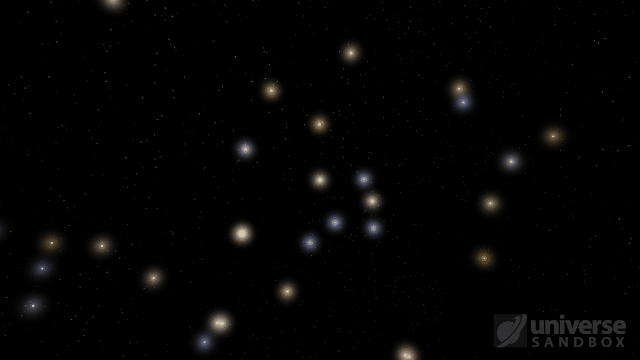
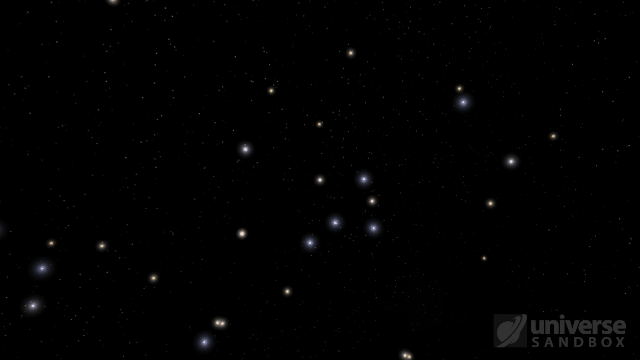
More Highlights
- Glows from stars and planets of the same radius and temperature are now the same size
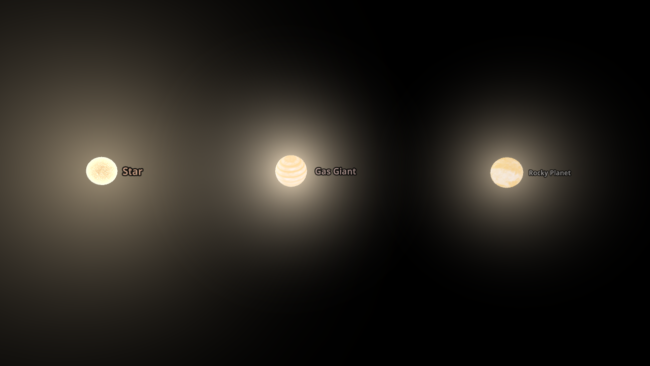
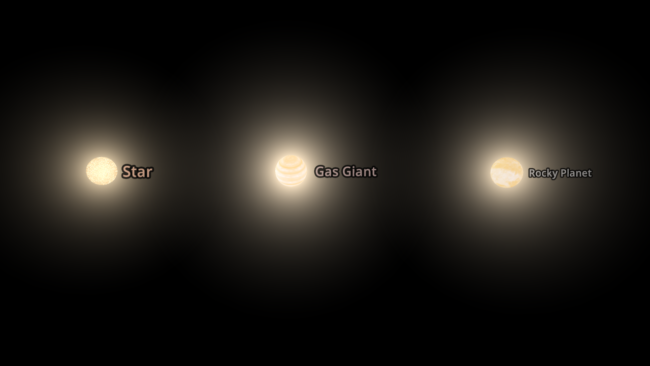
- Random Rock Particles and Dust Clouds can now be added directly from the Add panel
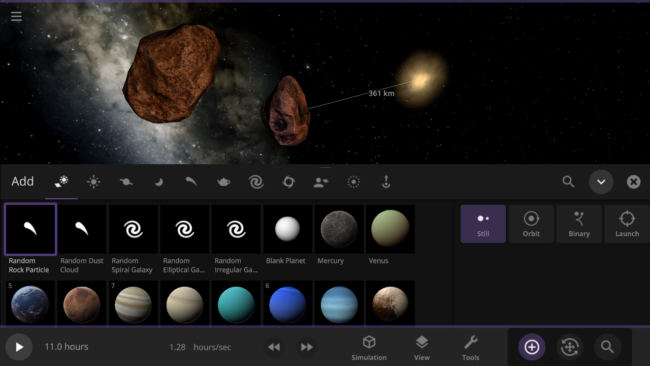
- The dynamic habitable zone now displays a notification indicating the object it is showing the habitable zone for
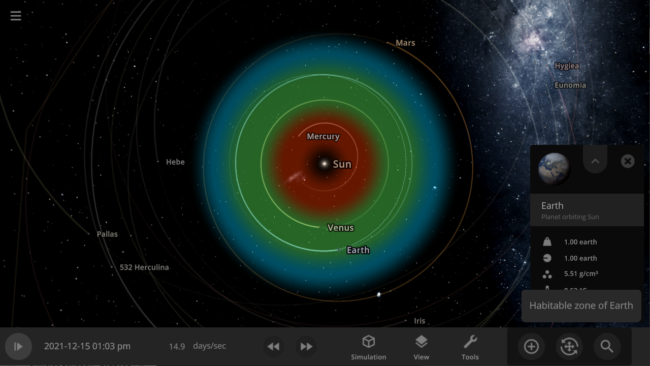
- Many user interface improvements: added two-column menus, fading scrollbars, and unit changes persisting in an object’s properties panel
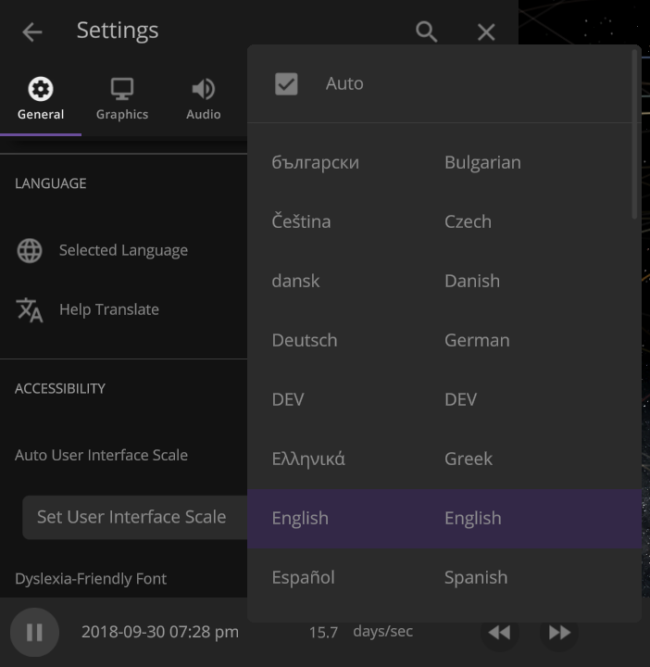
- The Gravity button now only turns the gravity between objects on or off. You can turn the gravity holding objects together on or off in the Advanced Simulation setting.
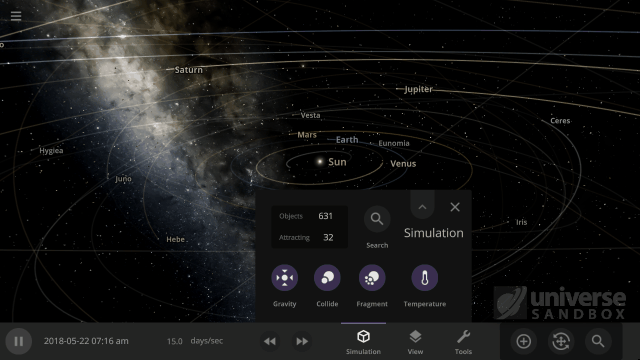
- The Guide panel has been reorganized. Check it out under: Home > Guides
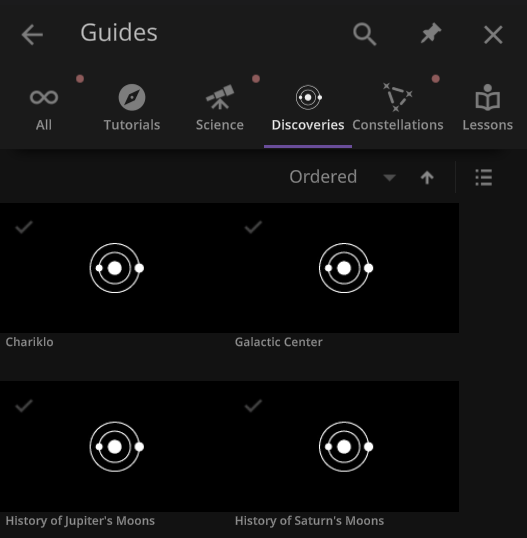
This update includes 4+ additions and 25+ fixes and improvements.
Check out the full list of What’s New in Update 31
Please report any issues on our Steam forum, on Discord, or in-game via Home > Send Feedback.
